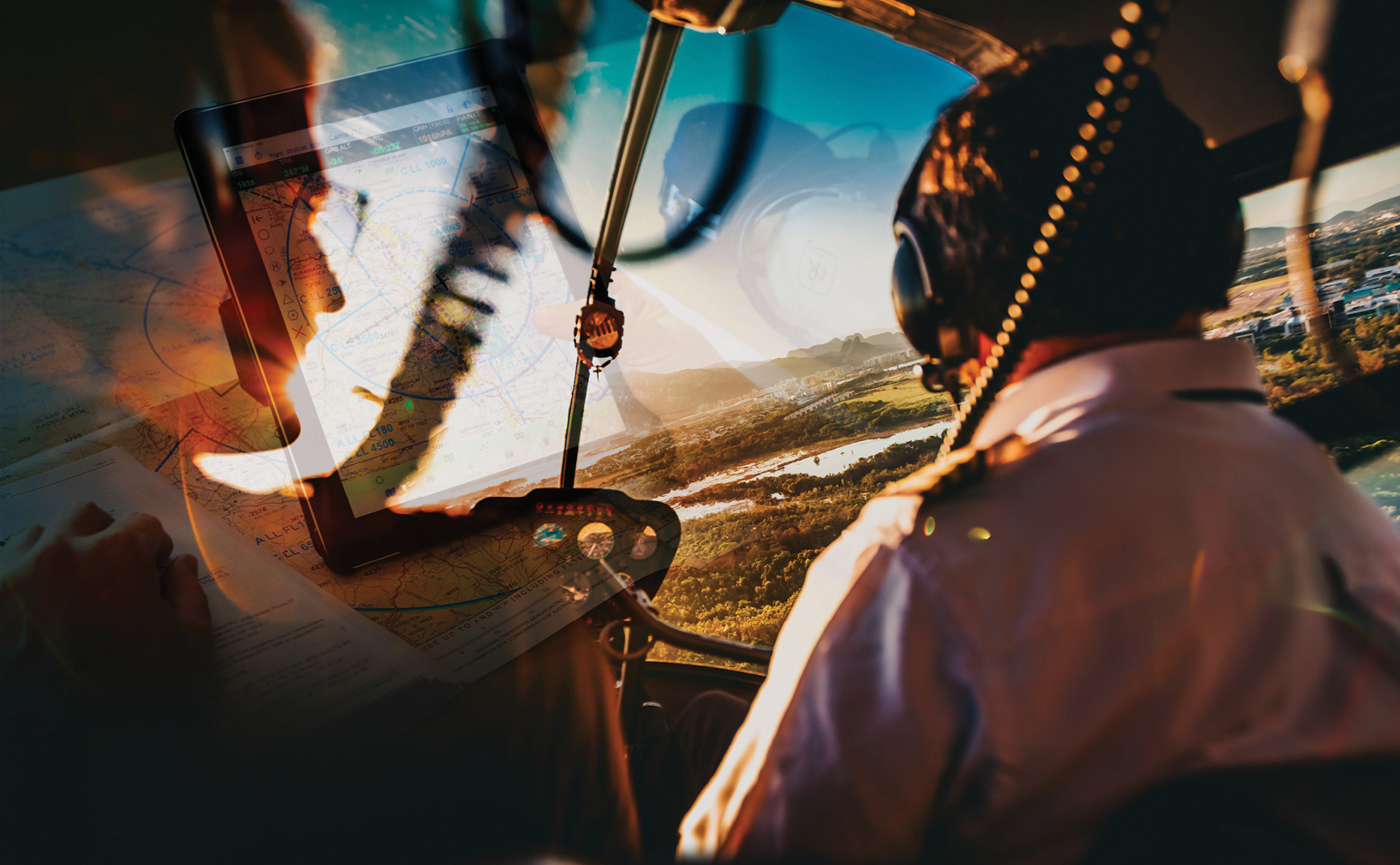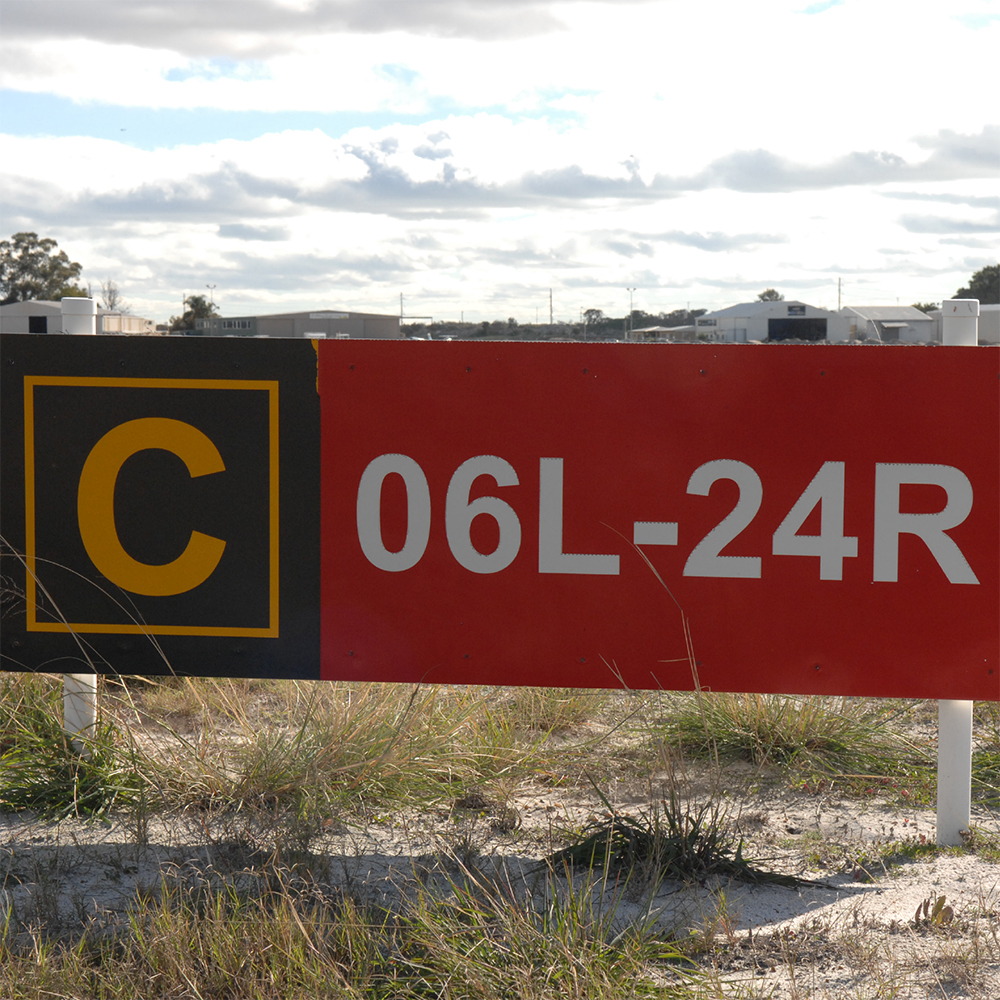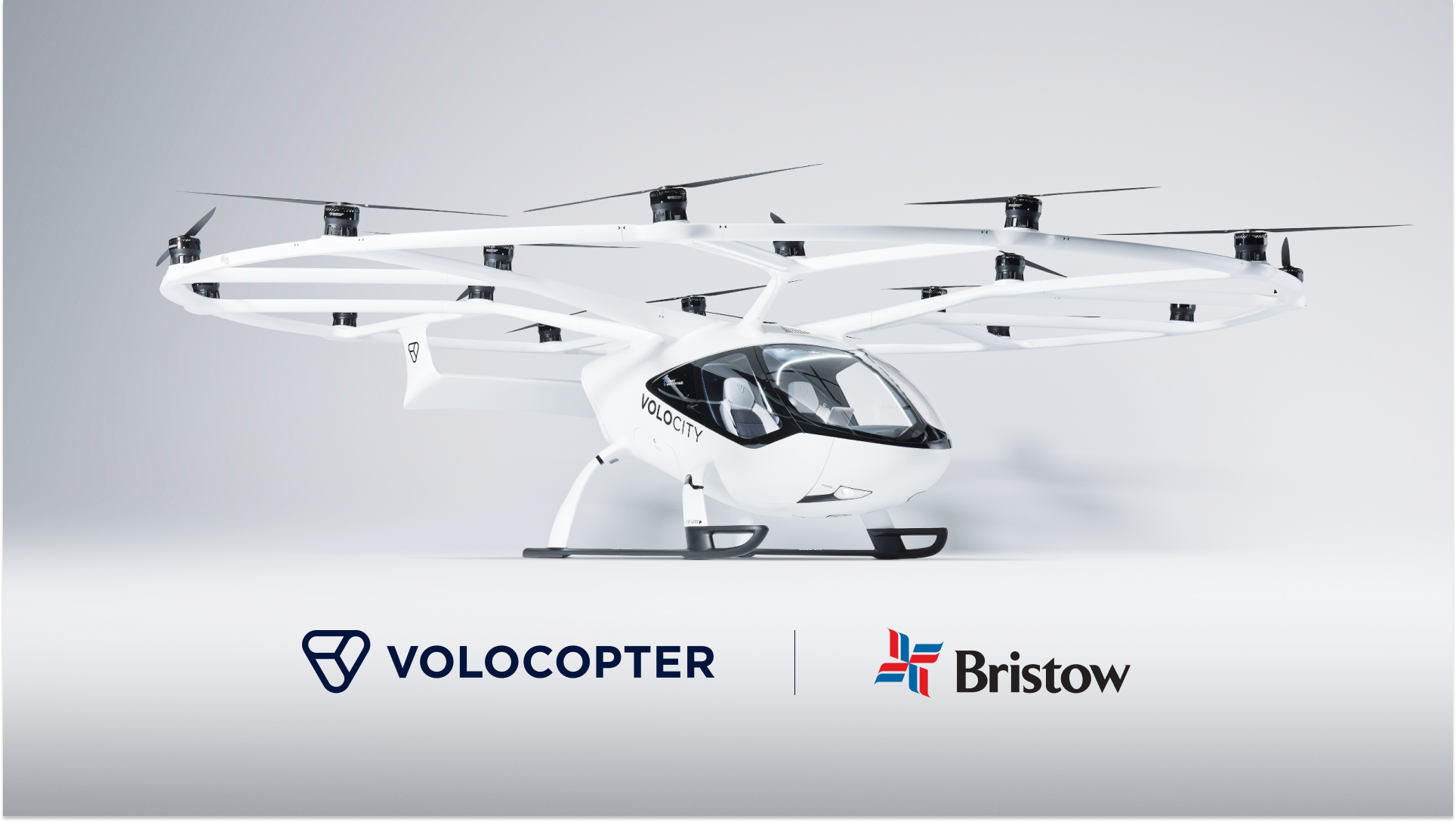
Full-stop landing
Suddenly everything stopped. There have never been months like March and April 2020 in the history of aviation. Previous world crises such as the world wars stimulated rather than strangulated aviation and, even during the Great Depression of the 1930s, the industry grew and evolved as technology rapidly progressed.
The worldwide shutdown in response to the spread of the COVID-19 pandemic saw a near complete wipe-out of airline passenger traffic. Online flight tracker FlightAware recorded about 280,000 flights between 24 and 30 March, compared to around 780,000 in a similar period the previous year. By the International Civil Aviation Organization’s (ICAO) estimate, international passenger capacity was down 91 per cent by April.
At the time of writing, the International Air Transport Association was estimating lost airline revenue from the pandemic would exceed $US314 billion ($A487 billion) this year, a fall of 55 per cent from the 2019 revenue total.
In an 24 April briefing, ICAO said the impact of COVID-19 had already surpassed the impact of the closest comparable event, the 2003 sudden acute respiratory syndrome (SARS) outbreak which resulted in a reduction of annual revenues by $US6 billion for airlines in the Asia/Pacific region. ‘The 6-month recovery path of SARS might not apply to today,’ ICAO said.

However, there has been a bounce in air cargo. Because passenger aircraft carry about half of all air cargo worldwide, the grounding of those aircraft has increased demand for space on the smaller freighter fleet. Several airlines have responded by using their passenger aircraft solely for shipping cargo.
‘We have never been as busy as we are now,’ chief executive of cargo specialist Coyne Airways, Larry Coyne, told aviation analysis firm Cirium, as reported by FlightGlobal on 3 April. ‘We would rather not have COVID-19,’ Coyne said, ‘but for our business, this has been a real uplift.’
Freight rates reflected the supply squeeze, increasing to nearly $US4/kg, from a previous
$US0.80c/kg, and boosting revenues fivefold in April this year. Supply chain analysis firm Agility reported transpacific eastbound freight capacity had increased 150 per cent since February. In response, ICAO issued new Guidance for the transport of cargo and mail on aircraft configured for the carriage of passengers.
Fuel costs fell as demand from airborne, seaborne and land transport collapsed, creating the situation where operators and analysts speculated that older, less fuel-efficient aircraft such as the Boeing 747 could have their service careers extended or in some cases be recalled from being mothballed. But the pandemic appears to have killed off the four-engine airliner. Cirium noted an almost total collapse in scheduled passenger flight activity for the 747 and Airbus A380.
It will take more than a few more freight flights to offset the reduction in business for the maintenance, repair and overhaul (MRO) sector. Fewer aircraft, flying fewer hours, means less demand for MRO services. Consultancy firm Oliver Wyman halved its forecast for MRO activity to $US43 billion globally. The forecast for 2019 had spoken of how ‘Rising incomes and consumer spending are pushing passenger travel to record levels and fuelling the largest year-over-year increase of the in-service fleet since 2008.’ All that has been wiped out.
Cirium says the active airliner fleet, which was about 26,000 in February 2020, has been cut by 64 per cent, to about 9000. The stored fleet of just under 17,000 aircraft is parked at about 900 airports around the world, including Schiphol in The Netherlands, where aircraft are parked on a not-needed runway, and Alice Springs in Central Australia.
Not all sectors of aviation are equally affected. In the midst of the collapse, there has been a mini-boom in international charter flights, which has created an avalanche of work for CASA’s International Operations team. Team officers worked extended hours seven days a week in March and April to ensure non-scheduled flights repatriating Australians and bringing in medical supplies were able to operate safely and legally.
Charter operations have been hard-hit, with tourism operators reporting near-total declines in activity. However, fly-in fly-out (FIFO) charters are continuing as the mining and resource industries of northern and eastern Australia adapt to the distancing and isolation norms.
Alliance Airlines told the Australian Stock Exchange there had been no negative impact due to COVID-19 on services operated for its FIFO customers. ‘Schedule frequency is actually increasing as our resource customers deal with the impacts of COVID-19 on their workforce,’ it said.
Across rural Australia, aerial application is doing relatively well. ‘We’re not seeing a great change in the way we do business,’ Aerial Application Association of Australia chief executive Phil Hurst says. ‘We are naturally self-isolating because we work in single-seat aircraft. We work in teams with a mixer but there’s a fair distance between the two. We are just observing a common-sense approach of workplace hygiene and social distancing.’
Border controls caused ‘some angst’ when first announced but the issue was soon resolved, Hurst says. ‘Those CASA exemptions have been extremely helpful, particularly for helicopter operators,’ he says. He hopes some of the temporary changes might lead to permanent reforms.
Reasonable but not drought-breaking autumn rains mean the application sector (which includes agricultural and firefighting aircraft) has enjoyed steady work, Hurst says. However, Australia had been very lucky the viral crisis had happened after the bushfire season of 2019–20, rather than during the season. ‘We could have seen severe disruption to the aerial firefighting effort,’ he says.
A look on any flight-following smartphone app during autumn revealed small aircraft making short flights on an otherwise empty map. Many of them are engaged in flying training. CAE Australia Flight Training is one organisation continuing to operate under strict protocols. Its Quality and Safety Manager Andrea Roberts says continued operation was only possible because the Canadian-based multinational and its Australian joint venture partner, China Eastern Airlines, had both been watching the issue from late 2019 and had instituted strict protocols by the fourth week of January 2020.
The measures implemented by CAE at its Moorabbin training centre include disinfection of each aircraft or simulator before and after flight, N95 surgical masks provided to all students and instructors to be worn during every flight or simulator session, replacement of face-to-face classroom lessons with distance learning, use of large classrooms for flight briefings conducted in strict compliance with social distance requirements, removal of shared use crockery and cutlery from the staff kitchen, use of body temperature checking for anyone arriving at the facility, and management meetings conducted remotely using Microsoft Teams software.
CAE also operates a large student accommodation complex at Moorabbin that houses its international airline cadets. Additional actions taken there include strict movement controls with students largely confined to the accommodation complex or the immediate airport precinct, adherence to all social distancing requirements within the complex, enhanced disinfection and cleaning protocols throughout the facility, all meals provided as takeaway, to be eaten in the student rooms rather than the dining hall, and a quarantine area set up within the complex in the event that a resident might test positive or display COVID-19 symptoms.
‘There are very strict protocols, covering what the instructor and student must do prior to entering the aircraft, once in the aircraft, during the flight and at the conclusion of the training activity,’ Andrea Roberts says. ‘We have to be very careful with what type of cleaning product we use on the aircraft controls to avoid damage, in particular the Garmin G1000 screens, for example, as an alcohol-based wipe might damage these expensive items, so we have a sourced a special screen wipe.
‘Our international cadets are basically living in a quarantine hub, so the risk of infection or transmission is extremely low.’

Wild times on the runway
Images of wild animals running free in locked-down towns and cities have a worrying parallel in aviation. The Australian Aviation Wildlife Hazard Group warns reduced aviation activity creates the conditions for increased wildlife activity in the vicinity of aerodromes. ‘The decrease in aircraft movements and fewer aerodrome reporting officers active on the airport can create ideal conditions for opportunistic wildlife,’ it says. ‘Wildlife have already adapted, and will continue to adapt, to the changed situation, taking advantage of the foraging opportunities and roosting sites that become available as a result of fewer aircraft movements and fewer humans to harass them.’
Airports in New Zealand reported increased Canada goose numbers since the lockdown, the group says. It recommends continuing wildlife hazard management, including ‘active harassment’ during the downturn. ‘This includes ensuring that all training is kept up-to-date. Having teams of skilled people available when a recovery commences will be critical to ensuring that the likely increased hazards can be addressed effectively.’
CASA response
The national aviation regulator responded to the crisis by extending certificates, permissions and privileges for between three and six months. The extensions applied to operations, flight training, airworthiness, maintenance training, aerodromes and drones. Some commencement dates for new regulations were moved back, others were moved forward if they were easier to comply with than existing regulations.
CASA Chief Executive Officer Shane Carmody says the viral slump has the potential to affect aviation safety. ‘Organisational and individual pressures that are simply not present in normal circumstances have arisen and where these cause safety related risks, there must be appropriate responses,’ he says. ‘At an individual level, there may be both physical and psychological pressures that can affect performance, whether you are a pilot, engineer or an aviation organisation manager or owner.’
Carmody notes recent research by Australian National University business academic Dr Di Fan that links the operational performance of organisations to the financial pressures facing them. Fan and colleagues found companies with increased debt levels had increases in breaches of safety regulations. Aviation cannot afford such a connection, Carmody says. ‘None of us in aviation can afford to put safety on the backburner. There is nothing more certain to damage the recovery of aviation than a lapse in safety performance or, worse still, an accident.’
None of us in aviation can afford to put safety on the backburner

Cleared for take-off? The return flight
‘I don’t think there’s going to be a snap back,’ Regional Aviation Association of Australia chief executive Mike Higgins says. ‘The return will be fraught and we need to turn our minds to that. CASA has been generous in granting a holiday from simulator check requirements, otherwise there would be no aircraft flying at all.
‘When we start flying again, there’s going to be a big backlog of people who were due or will soon be due [for check flights]. There will be pilots queued at the doors of the simulators. We will need to work with CASA to manage that.’
CASA Flight Standards Manager Roger Crosthwaite says the rate of increase in flying activity as we return to normal operations will be critical.
Ramping up activity rapidly will cause organisational stress, when issues like currency, recency, staffing levels and fatigue will come to a head. ‘We need to ensure that any shortcomings are addressed before safety standards are adversely impacted and potentially start to drift,’ he says. ‘There’s also a human element from the extra stress of the economic situation. We need to recognise these issues early and manage them.’
Associate Professor Geoff Dell of Central Queensland University (CQU) agrees. ‘The issue will be maintenance of standards because nobody’s doing any flying,’ he says. ‘When things go back, there will certainly be recency issues, a need to put people back through a standards-checking process—and that will drive the rate at which things can expand. Because of the likely extent of the hiatus, in long haul particularly, there’s going to be a particular need for forward planning and a systematic approach to getting crews back to compliance and best practice standard.’
Dell, Discipline Leader at CQU’s Multimodal Accident Investigation (Crash) Lab, says the open-ended aspect of the viral crisis is the most frustrating. ‘There’s no point in training people now because we don’t know when it’s going to end—you might have to do it all again.’
He says the effect on aviation as a whole was analogous to the effect of interruptions on an individual during a pre-flight inspection or checklist. ‘Interruption is a hazard—you have to go back, validate everything you’ve done and not make assumptions. For that reason, the whole reintroduction process will have to be carefully planned to make sure everyone is singing from the same song sheet, from the chief pilot down to the newest first officer.’
General and recreational aviation would face the same issues but probably with less use of simulators and standardised checking systems and processes. There was the potential for more standards erosion and opportunities for error to creep in, Dell says.
‘It’s a textbook change management problem, where the change is a hiatus. The whole system has to restart while maintaining its integrity.’
Crosthwaite says individual pilots and engineers can contribute to keeping this integrity intact. ‘It’s a tough time but also a golden opportunity to relearn, revise, refresh, and upskill. It’s also a time to be positive and look after your mates.’
Shane Carmody says even an unwelcome and disruptive crisis can create opportunities. ‘If we are collectively smart enough, we can capitalise on these to build an even better future.’





Congratulations! A well researched and informative article on the state of play in Australia. It has appeared at a time when we are rapidly transitioning from a somewhat gloomy lock-down way of living to the light now at the end of the tunnel. Trouble for Australian readers is that we are not too sure what the new world will be like when we emerge once again into the sunlight as we leave tunnel of gloom. Robert had provided a series of goalposts which have been set by various people and this helps us to understand the overall picture of where our industry is at present; and where it will probably move as we get back to the ‘new normal.’ I have forwarded Robert’s feature article onto my 4,734 complimentary subscribers to my VTOL e-news Asia-Pacific. It has appeared in my mid-month Board Room Briefing which was sent out on Friday, 12 June 2020. Thanks again.